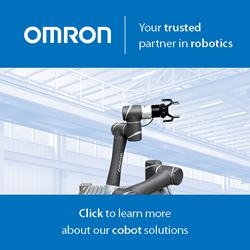Wire bonding is a key process in semiconductor production. Extremely fine wires with diameters of 15 to 75 micrometers are used to create tiny electrical connections between a semiconductor chip and other components.
 2D cameras for positioning and inspecting ultra-fine wires in semiconductor production
2D cameras for positioning and inspecting ultra-fine wires in semiconductor production

Case Study from | IDS Imaging
Application
Wire bonders are available with various degrees of automation. With manual devices, each bond position must be approached manually before the corresponding connections can be made. Semi-automatic machines automatically position the wire after the first bond to create a wire bridge. Fully automatic machines use a structure recognition system to determine the position of the chips. Here, the production of all wire bridges is completely automatic. The operator only has to change the wire or tool on the bonder occasionally and take care of loading and unloading.
F&S Bondtec uses image processing with IDS industrial cameras for various tasks in the production process, especially in the semi-automatic machines of the 56i series and the automatic wire bonders of the 86 series. "Our wire bonds connect previously placed microchips or other components with different contact points on printed circuit boards and breathe life into the chips.
However, positional inaccuracies of the components can occur during the upstream processes. Our machines have to determine these positional inaccuracies using the IDS camera image and our own image recognition software and update the wire bond positions accordingly," explains Johann Enthammer, Managing Director and CTO at F&S Bondtec.
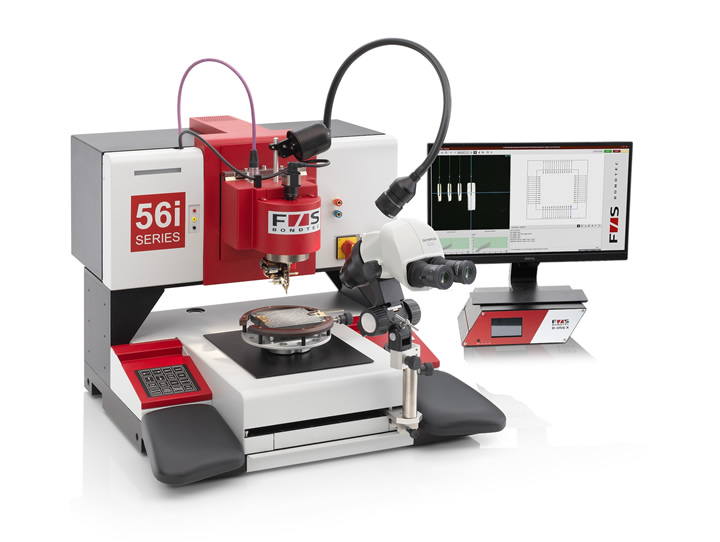
Image processing is used in the production of the semi-automatic 56i series wire bonders.
For each bonding process, parameters such as ultrasonic amplitude, force, time or the movement sequence for setting up the bonding bridges must also be programmed in advance. The camera's image feed is also used when creating these programs. For example, you can drag a wire in the live image and change its position. The axes can also be adjusted by clicking on the image.
On the software side, the Austrian company relies on a specially developed image recognition library that works with position/pixel mapping, greyscale recognition and edge detection, for example.
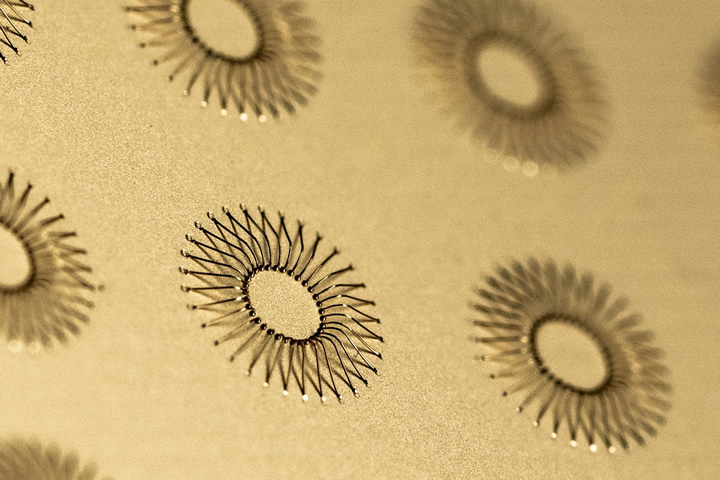
Bond circles
Visual assessments of bond connections
Once the bonding process is complete, the camera is used again, as Johann Enthammer explains: "After welding, the wire bonds are visually checked by the operator via the camera image. Among other things, the position and shape of the bond bridges are assessed. The camera image therefore has more than just one function during the bonding process."
Between one and seven industrial cameras are used per system. Depending on the type, these can be the particularly compact and cost-effective uEye XCP models. At just 29 x 29 x 17 millimeters, they are the smallest housed IDS cameras with C-mount and have a completely enclosed die-cast zinc housing. Their screw-type USB micro-B connection and compatibility with the Vision Standard (U3V / GenICam) simplify integration. F&S Bondtec also uses uEye CP cameras. These tiny powerhouses offer maximum functionality with extensive pixel pre-processing and are also perfect for multi-camera systems thanks to the internal 120 MB image memory for buffering image sequences. Users can choose from a large number of modern CMOS sensors. They also score points with a compact housing measuring just 29 x 29 x 29 millimeters.
Camera selection
The small design of the models and the large number of different sensors were important criteria when selecting the camera, as was the low thermal expansion. However, the free IDS peak software development kit with all the programming interfaces and software tools required for operating and programming the cameras was also crucial. Easy-to-understand convenience functions ensure an intuitive programming experience and quick and simple commissioning of the industrial cameras.
Johann Enthammer confirmed: "The driver shows very stable runtime behavior. The easy-to-program API and the plug and play functions with running software convinced us. This is because there are many different use cases for our systems that can be implemented with the API without any problems. Our machines can be equipped with up to seven different bond heads. A different IDS camera can be integrated in each one."
 Outlook
Outlook
The wire bonders from F&S Bondtec ensure stable connections in semiconductor production. With the help of integrated image processing, the manufacturing quality and productivity of the systems can be further increased and rejects avoided. At the same time, the cameras make work easier for the operators. In addition to standard products, the company develops special machines and customized software solutions that also use AI models. "We definitely see a lot of potential for the use of artificial intelligence in our applications in the future," says Johann Enthammer. Image processing opens up completely new potential, especially in conjunction with AI, particularly in terms of efficiency, precision and quality. And thanks to IDS's broad portfolio, the right "eye" can be found for every application - for micrometer-precise results.
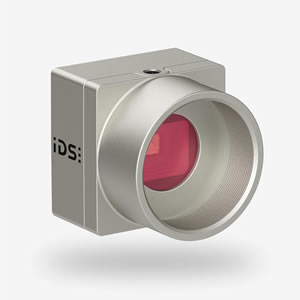
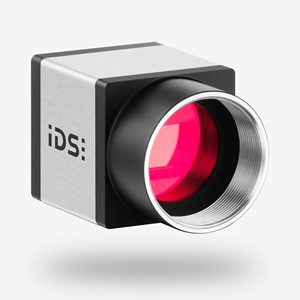
Camera
F&S Bondtec uses various uEye industrial cameras, for example:
uEye XCP - the industry's smallest housing camera with C-mount
Model used: U3-3680XCP Rev.1.2
Camera family: uEye XCP
uEye CP - incredibly fast, powerful, future-proof
Modell used: U3-3040CP Rev.2.2
Camera family: uEye CP
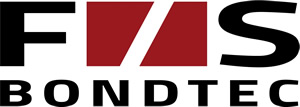
Customer
F&S Bondtec covers the desktop bonder and tester segment worldwide and offers a wide range of production and test equipment. It extends to the desktop micro-factory, which combines all wire bonding processes and all test methods in one machine base. Since the company was founded in 1994, several thousand wire bonders and bond testers have left the factory and are in use in many laboratories, development departments, pilot production lines and production facilities around the world.
The content & opinions in this article are the author’s and do not necessarily represent the views of RoboticsTomorrow

IDS Imaging Development Systems Inc.
World-class image processing and industrial cameras "Made in Germany". Machine vision systems from IDS are powerful and easy to use. IDS is a leading provider of area scan cameras with USB and GigE interfaces, 3D industrial cameras and industrial cameras with artificial intelligence. Industrial monitoring cameras with streaming and event recording complete the portfolio. One of IDS's key strengths is customized solutions. An experienced project team of hardware and software developers makes almost anything technically possible to meet individual specifications - from custom design and PCB electronics to specific connector configurations. Whether in an industrial or non-industrial setting: IDS cameras and sensors assist companies worldwide in optimizing processes, ensuring quality, driving research, conserving raw materials, and serving people. They provide reliability, efficiency and flexibility for your application.
Other Articles
Picking the right chart - (Semi-)Autonomous surface and underwater mapping for rivers and lakes
Pallet by pallet - Intelligent robotic vision system destacks up to 800 objects per hour
Trained quickly, inspected swiftly - Handling and defect inspection of indexable inserts
More about IDS Imaging Development Systems Inc.
Comments (0)
This post does not have any comments. Be the first to leave a comment below.
Featured Product
